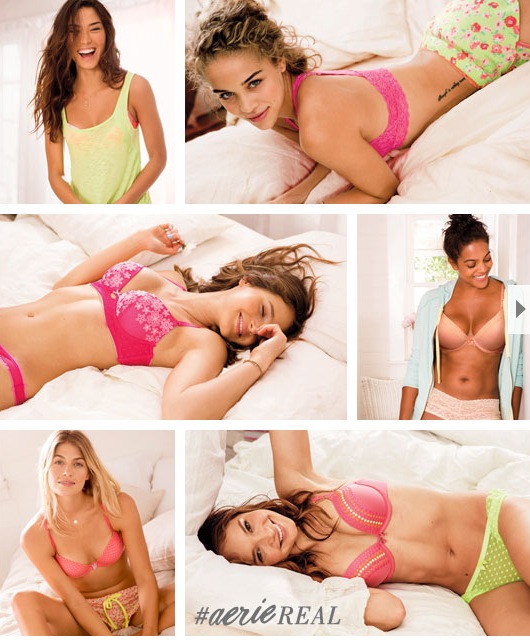
American Eagle has announced that, in an effort to present more realistic role models for teens, it will not be using Photoshop in its new lingerie campaign. Images will appear unretouched, with such “imperfections” as stretch marks, fat, puckering, lines, tattoos, and beauty marks on display. It’s a noble effort at altering the discussion about what constitutes beauty. There’s only one problem: Magazines don’t make women feel bad about themselves. Other women do. And this is even truer when it comes to teenage girls.
A 2013 study out of Texas A&M of more than 235 girls aged 10 to 17 found that how they felt about their bodies was influenced more by peers than by certain forms of media, including TV. Social media has expanded the field of competition, too, with Facebook and Instagram doing as much, if not more, than the girls in the lunchroom to fuel feelings of insecurity. A 2011 study from the University of Haifa found that the more time adolescent girls spent on Facebook, the more likely they were to develop a negative body image and eating disorders. Blogs and photos that glorify weight loss with photos tagged #thinspiration or #thinspo, meanwhile, saturate the web, having increased by 470% between 2006 and 2008 alone. For teens, then, what matters more is the girls they know rather than the girls they don’t.
What’s more, by calling attention to the bodies of their unretouched models, American Eagle is doing exactly what it purports to be rallying against: Drawing attention to women’s figures and all their possible “flaws.” A similar hypocrisy occurred recently when website Jezebel offered $10,000 to anyone who could supply unretouched images from Lena Dunham’s Vogue cover shoot. Under the guise of supporting and defending a “normal size” body, they were, in fact, making a spectacle of it. American Eagle is no different.
And yet what else might we expect? The end game for the company isn’t, no matter what it claims, to save the self-esteem of American girls. It’s to increase profits by selling lingerie. If American Eagle is serious about changing the way the media presents women, their anti-airbrushing initiative should go into effect company-wide—more overall philosophy change than ad campaign. Otherwise, they’re just making money off of women’s bodies like everyone else.
The media’s use of airbrushing is no longer anything close to a secret, even if it’s not always discussed. And let’s not forget that American Eagle’s models are still professional models, paid to look good. And they do look good, “flaws” or not. Their photos are taken by professional photographers under ideal conditions, including professional grade lighting. These, American Eagle is saying, are real women, unretouched and proud of their bodies. (Just look at their cellulite!) The average 5-foot-5 American 18-year-old, meanwhile, weighs 147 pounds and has imperfect skin and takes most photos of herself using her smartphone.
Which is why it’s arguably preferable that campaigns continue the practice of airbrushing, and for teens and women to believe that most photos they see in advertisements and in magazines are enhanced, and couldn’t possibly represent the truth. It’s one thing to understand that you can’t live up to a celebrity ideal, or to the picture on the cover of a magazine—it’s not real anyway. But when the teenage girl still doesn’t live up to the unretouched, natural, “real” women in American Eagle’s ads, how will she view herself then?
More Must-Reads from TIME
- Donald Trump Is TIME's 2024 Person of the Year
- Why We Chose Trump as Person of the Year
- Is Intermittent Fasting Good or Bad for You?
- The 100 Must-Read Books of 2024
- The 20 Best Christmas TV Episodes
- Column: If Optimism Feels Ridiculous Now, Try Hope
- The Future of Climate Action Is Trade Policy
- Merle Bombardieri Is Helping People Make the Baby Decision
Contact us at letters@time.com